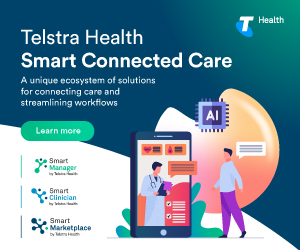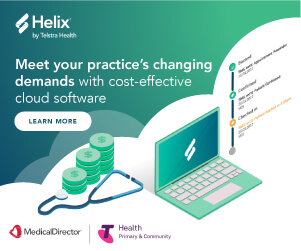4 Key FAQs about collaborative care
The shift towards more patient-centric healthcare means the spotlight is on collaborative care as a significant catalyst for change. In this article, we take a look at what collaborative care means in healthcare and why it’s critical to enable better patient outcomes.
1. What is collaborative care?
Collaborative care promotes an environment where healthcare professionals can communicate, co-operate and collaborate efficiently, often in real-time, to enable better health outcomes for patients.
2. What are the benefits of collaborative care?
Effective collaboration, when achieved within a system that supports interoperability, can enable more timely and accurate health outcomes, breaking down the traditional communication ‘silos’ to uncover a more efficient and connected approach to care. At the same time, collaborative care promotes better quality of care, enhanced patient safety and an overall better patient experience.
According to MedicalDirector’s whitepaper Interoperability in healthcare: Synergising an industry, the most significant benefit of moving towards more interoperable systems is what it means for coordinated care and improved patient outcomes.
It found value-based healthcare could improve both the experience of the patient and the experience of delivering care for healthcare practitioners. It can also help to reduce hospital admissions, curb unnecessary expenditure and alleviate pressure on an already burdened system.
3. How can cloud support collaborative care?
Cloud-based clinical and practice management systems like Helix, support interoperability by breaking down the barriers of communication to uncover a more connected approach to care.
Through the cloud, every practitioner, clinician and carer gains access to the same patient information through the cloud, enabling real-time collaboration across different healthcare environments.
MedicalDirector’s whitepaper revealed a range of significant benefits of cloud-based health solutions in enabling greater interoperability. It found cloud solutions provide the digital infrastructure needed to effectively coordinate patient-centred care, while interoperability facilitates the transition to healthcare that becomes the shared responsibility of the patient and practitioner. In fact, when it comes to the cloud, 64% of respondents admitted they consider flexibility to be the main benefit of using a cloud-based EHR/PMS systems.
“A key benefit of cloud health software is that it supports better real-time communication,” MedicalDirector’s Chief Clinical Advisor and GP, Dr Charlotte Middleton, said. “For instance, it supports digital referrals, faster communication between primary healthcare providers and hospitals, as well as better communication between GPs and allied health providers. Ultimately, it is this real-time benefit of cloud software that helps support interoperability in the wider health ecosystem.”
4. Can we do more to embrace collaborative care?
Recent industry reports suggest medical profession needs to improve the collaborative care, interoperability and embrace the benefits of digital transformation. Already interoperability and data exchange are driving technology buying decisions for 36 per cent of healthcare organisations, according to the 2017 Health IT Purchasing Intentions Survey.
But MedicalDirector’s recent whitepaper, Interoperability in healthcare: Synergising an industry, found while interoperability is paramount to an efficient system of care as well as more accurate patient diagnoses, there is some reluctance and fear around embracing technological change.
The report found many in the medical industry are unsure about the security of moving sensitive patient information around, especially now given the exponential rise of cyber attacks and data breaches. In fact, 76% consider the security of information being stored or sent their greatest area of concern in regards to managing patient information.
Moving forward, in order to enable more ideal healthcare, the white paper stressed these results indicate the need for greater communication and collaboration between systems, practices and healthcare professionals that will ultimately deliver a more holistic view of a patient’s health.









